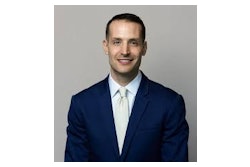In 1948, Zora Neale Hurston published an article in the Negro Digest titled “What White Publishers Won’t Print.” Today, the issue turns not on what white publishers won’t print, but rather, what they will print when it comes to African-American literature.
When Jerry McMillan’s “Waiting to Exhale,” Toni Morrison’s “Jazz” and Alice Walker’s “Possessing the Secret of joy” all appeared on The New York Times Best Sellers’ list at the same time for several weeks in a row in 1992, the cross-over popularity and appeal of Black women writers was hailed by many scholars and critics as dramatic proof that Black literature was about to have a Second Coming.
Hurston, one of the charter members of the dazzling Harlem Renaissance of the 1920s that featured a Black creative explosion heard around the world is not alive to witness this current mass-produced blitz of African-American-written romance, mystery, science fiction and self-help books — all of a decidedly middle-brow orientation. It has been referred to by some as a “new renaissance” — but is it? And who reaps the financial bonanza?
The critical acclaim and popular success of “hot” Black writers does not obscure the troubling fact alluded to by Hurston nearly 50 years ago: The publishing industry in the United State& is still dominated overwhelmingly by white males, and the role of editor at these houses remains, by and large, the untrammeled province of white males and females.
According to a 1991 study by the Association of American Publishers, African Americans occupy a mere 4.6 percent of the editorial and management positions in the $20-billion-a-year book publishing industry.
Although the U.S. Department of Commerce has no figures available on the numbers of African American publishers, Commerce officials describe it as “very small.”
White Grip
Given the white grip on publishing the question, then, is whether the industry can adequately accommodate the new Black voices, achieving for them exposure to the audience they address.
Playing “devil’s advocate” at the recent Fourth National Black Writers Conference held at Brooklyn’s Medgar Evers college, was President Clinton’s favorite mystery writer, Walter Mosley, widely known for his wildly popular Easy Rawlins Mystery Series, now published in six languages. One novel in the series, “Devil In a Blue Dress,” was recently turned into a critically acclaimed film directed by Carl Franklin and starring Denzel Washington.
“White people,” said Mosley, “are the only ones who can tell people about writers. I don’t like it, but it is true. The truth is that the cultural backbone of America is not only its literature, it is the book publishing industry. Our history, our culture, our cinema, our literacy and our morality are based on people in that business and most of the people who dominate that business are white men. Liberal white men, who dine with Nelson Mandela, then go to their [private] clubs and talk about what Mandela said.”
Mosley, who also serves as Visiting Artist-in-Residence at New York University, knows whereof he speaks. Publishing industry surveys and a July 1995 Village Voice article, “The Unbearable Whiteness of Publishing,” bear him out. According to the article, “White editors exercise tremendous control over a range of social and policy discussions, including debate over affirmative action. Yet as an industry, publishing is whiter than most.”
The publishers, the editors, the designers, the sales force, the publicity, the foreign rights experts, the reviewers — “98-plus percent are white,” said Mosley.
“[They are] unapologetically white. We have to worry about our representation in mainstream and international publishing. Without [Black] editors and publishers in positions of power, 10 years from now, we will be looking for a new renaissance because the people who forgot the [Black authors] before us were white people in publishing.p They did not care because [Black authors and their public] are not their friends, not their constituents. It is not their language, it is not their history.”
The Shut Out
By selectively shutting out Black writers, white cultural gatekeepers have also drastically undervalued the social and economic impact of Black women as cultural consumers, contends Jacqueline Bobo in the introduction to her book, “Black Women as Cultural Readers.” For example, the white publishing establishment was taken off guard by the responses of McMillan’s “Waiting to Exhale.”
Bobo cites Daniel Max of the New York Times Magazine, who wrote, “Of course, [B]lack authors have been a fixture on the literary landscape for decades, but the majority of their books have been consciously literary efforts, or novels in which ideology is at least as important as character development and plot.
Readers of these books have been — or were thought to have been — whites and a small group of [B]lack intellectuals. McMillan, by contrast, writes about the lives of essentially conventional [B]lacks, who have up to now received little attention. Her success has opened publishers’ eyes to a growing [B]lack middle-class readership.”
In sounding a call for change, Mosley said, “It is important that we work together in every way to pressure and change the hierarchy of the American and international publishing culture. We have to challenge, persuade and overcome the walls that are built around us. But more importantly, the walls that have been built in our minds. We are not in a renaissance now, and we will not be in one unless we open ourselves to our people. I am not suggesting that we give away income, but we have to get involved, work with people and make sure we can make our books successful in our own communities.”
Self-Reliance, Self-Determination
For years, poet, playwright and activist Amiri Baraka has been urging African-American writers to form a union or take steps toward building a structure of “self-reliance and self-determination.” At the conference, Baraka said that if such steps are not taken, the only people who will experience a new Black literary renaissance will be the major white publishing houses.
“They decide what is hailed and what is dismissed,” said Baraka, a professor at the State University of New York at Stony Brook. “They say what is produced and what will never be. They choose the superstars, they give out the grants. They tell us what is literature. They have a canon in which they have selected white men as the masters. They are the genius makers …. They are the creators of the various prizes. They select who will be idolized and followed, they let us know literature is serious and is not.”
Despite the mainstream media ballyhoo that Black writing is experiencing a renaissance, many of the African-American writers who attended the conference conceded that a real renaissance in Black literature is likely to happen only when writers of African descent become more self. reliant by allowing Black agents., editors and publishers to market and produce their books. Currently, only a handful of Black publishing houses exist — most notably, Nobel Prize and Third World Press. Ironically, the few Black publishers who do offer an alternative often complain that they are shunned by writers who fear that they cannot provide the necessary “exposure” through high-powered marketing.
With the notable exception of Pulitzer Prize-winning poet Gwendolyn Brooks, who is perhaps the most principled example of an African-American writer committed to submitting her work only to Black publishers, none of the leading African-American writers today are consistently associated with African-American publishers. But many changes are ahead if Medgar Evers College President Edison O. Jackson and Conference Director Professor Elizabeth Nunez, have their way. Jackson, for example, has pledged $100,000 to start a Black writers institute on the campus named after the slain civil rights organizer, And Nunez is the prophet of hope.
Nunez, who organized the three previous writers’ conferences, said that at the first meeting in 1991, many predicted a dismal future for Black literature. Many attendees, she said, pointed to the fact that there were hardly any books by Black writers in the major bookstores, and that one by one, Black studies programs on college and university campuses were being eliminated.
“Today, in 1996, at the end of the century, at the end of the second millennium, everything has changed. It is Black literature that is in the forefront. Black writers who are carrying the literary banner into the 21st century and into the third millennium. What a triumphant journey we have made, from those dark days when we were beaten and chained in an attempt to prevent us from learning to read and write,”said Nunez. “Here we are, the ones who energize language today, who reinvent and enrich the very tongues of those who wish to silence us.”
Mass Appeal
What distinguishes today’s crop of Black writers from earlier writers is their middle-brow appeal. The conference sought to determine what is sparking interest in African-American literature, and whether this interest is, as Harvard University Professor Henry Louis Gates Jr. has suggested in writing, directly related to a trend among Black artists to discard the anxieties of a bygone era and presume “the universality of the Black experience.”
“Writers like Walker, Morrison, Gloria Naylor and Charles Johnson and even earlier writers like Richard Wright, James Baldwin, Ralph Ellison and the revived Zora Neale Hurston have enjoyed critical success and primarily appealed to a Black intellectual and academic readership,” says Professor Mae Henderson, currently a scholar at the National Humanities Center in North Carolina.
“But writers of What some are calling a `new renaissance’ — writers like McMillan, Bebe Moore Campbell, Walter Mosley, E. Lynn Harris, Susan Taylor, Octavia Butler and Nathan McCall — have tapped a neglected market of women, gays, and African-American readers hungry to see their lives and interests reflected in the pages of these mass-produced romance, mystery, science fiction and self-help books.”
Bebe Moore Campbell, author of “Brothers and Sisters” and “Your Blues Ain’t Like Mine,” participated in a conference panel that broke down the readership of works by Black writers. She said that Black women and single women with leisure time comprise a large audience of admirers. Citing a proliferation of Black publications that includes journals and magazines, she pointed out that this readership did not grow overnight.
The blossoming of book clubs and the heavy promotion by publishing houses are some examples of the tools of mass appeal, she said. Her sentiments were amplified by William Cook, the Israel Evans Professor of Oratory and Belles Letters at Dartmouth College. “[The market for] romance novels directed at Black women is growing. I don’t see that surge in fiction by Black men. There is a reason for that,” he said.
“When we look at the prominence of Black women writers now…or the emergence of Black gay male writers — [we see that] both groups have a huge audience outside the African-American readership. What you have is an increase in African-American readership, but also thousands of white women who … find in the Black woman that certification of historical victimization that is not easily argued from their own vantage point.”
Death of Protest?
The death of the protest novel is another reason for the new interest, Cook said. “Our literature has turned to the Black experience, the sense of self, power of recovery and culture much more than its earlier focus on the horrors of racism and oppression. We are turning to ourselves and in one sense, the Million Man March becomes a metaphor for that.
It wasn’t a protest march as was the March on Washington that spoke to white America about what must be done. It was a march about what must we do, so in a way, I see it as metaphor for what is happening in the literature.” According to Bobo, books by McMillan underscore a claim that Black cultural producers have long made: stories about Black life that were different from sanctioned representations could find a market and have widespread appeal, especially within the Black community.
“Thus, the importance of “Waiting to Exhale,” she writes in “Black Women and Cultural Readers,” “is that it effectively demonstrated that [B]lack culture is not monolithic and that [B]lack readers respond to a range of stories of [B]lack life. They are attracted to more than simply those that, as one of the few [B]lack editors expressed it, present the `escape from the ghetto story.'”
Long Literary Tradition
It was not long ago when professors at mainstream institutions were hard-pressed to find works by African-American writers in the classroom. Many professors who were students in the 1960s and early 1970s recall attending institutions where there was an absence of Black literature. That was the case even for some historically Black institutions. Today, it’s a different story. What is exciting about teaching now, said Cook, is what is available — which was not always welcome.
Students today don’t see reading African Americans as something odd, contends Cook. “They see it as something normative. That makes’ the job easier and more exciting. It is easier and exciting because students can see themselves, images just like them come to life on some of the pages of those literary textbooks.”
Karla Holloway, director of the Duke University Department of African and African-American Studies, also sees a comforting reinforcement in terms of the literature she brings into the classroom and her experiences. It is necessary, she said, “to get students to think carefully in terms of the kinds of writing we do in the Black community, and not to put it all into the same pot, because we are different kinds of writers. That is something that the media does not encourage us to do.
“We have always been writing,” says Holloway, “and we have always been writing in record numbers. But the numbers of people and the kinds of people who are buying our literature now are changing. Something that Toni Morrison has been saying is happening with Black writers. She has said `I am always writing for my community and it is always about me.'”
New Ground
Comments by those at the conference not only called into question the efficacy of white editors and publishers in dealing with Black literary voices and Black audiences, but left many writers pondering the possibilities of a true renaissance in which they can be true players.
Henderson perhaps best sums up the contributions by this group of contemporary writers when she asserts, “This new `renaissance’ of Black writers does not necessarily have to fight the bugaboos of earlier generations. During the 1920s, writers sought an `authentic’ cultural voice; during the 1960s and 70s, writers sought artistically to expose the link between the dominant ideology and the values we attach to literature. Although each generation has had its discontents, it would seem that Black writers in the 1990s are staking out new ground.
“They have not only found their voices, but they are asserting those voices into a national, and indeed international, conversation. Their writing demonstrates that they are acutely aware of literature and its engagement in a broader cultural and political arena. It is this struggle in the contested terrain of cultural value and cultural authority that now engages Black writers.”
But Mosley, pressing his case for self-reliant structures, told colleagues at the writers’ conference a different story. While Black writers have ventured into every genre, he said, and have “taken over,” and while it seems as though they have “arrived,” in fact, “they have not. What happened to the first renaissance?” he asked. “What happened to all the writers of the 1930s, ’40s, ’50s, ’60s and ’70s. Where are they today, and where are their books?”
Most people cannot answer that question, he said, and when they do, “it’s sad,” because most of the early writers who are alive are selling their books on street corners.
COPYRIGHT 1996 Cox, Matthews & Associates
© Copyright 2005 by DiverseEducation.com


















